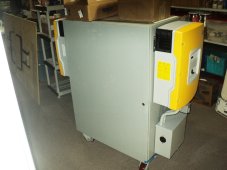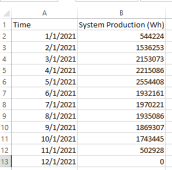My ideal would be a to have a battery backup system that could store and produce enough to supplement my household use if the grid is down through any means. So i could switch to the backup system and the panels would produce on the best day up to 100 kWh, but more like an average of 80.
That's a lot of energy.
Do you need so much energy for backup?
Does everything need to be powered during a grid outage?
How long do you expect to need backup for?
What sort of peak power draw do you need to cover?
I think a backup energy audit is worth doing.
If you really do need to supply that much juice you may want to consider alternative means of supplying backup power, such as a large generator. Or at least a solar/battery system which has a generator for supplemental energy/backup.
For an off-grid battery and inverter system to have enough capacity to supply of 80-100kWh/day is going to be big and expensive. Especially as it will do very little most of the time.
And going with a grid tied battery system is also going to be expensive. They just are. No idea of the regulatory environment where you are nor the sort of import/export tariff regime you have but it is generally pretty hard to make a valid financial case for installing grid tied batteries. The energy throughput cost of batteries which would conform to code is still pretty high, usually it's just cheaper to buy from the grid.
While our home scenario is not quite the energy size of yours, we can in the Summer here be pulling 100kWh/day with family/guests staying and more aircon operating. Our biggest day was 144kWh.
But my off-grid backup system is not designed to power everything in an outage. It's designed to supply power for the basics while appliances such as ducted aircon, oven, induction stove and other high power draw circuits do not operate during outages. This cuts down the scope of the backup system considerably.
I have an 11kW grid tied system. Yours I'm guessing is at least 3 times that.
My off-grid backup is 2.2kW PV, 4kW AIO inverter and 18kWh of SLA batteries. Connects to the house power via a transfer switch, and those high power circuits are not connected to the off-grid side of the supply. I also have a 3kW inverter generator which can supply power to AIO inverter should the solar conditions be insufficient to charge the batteries in the daytime.
Basic household load without use of any aircon is ~500W give or take, so most stuff is well covered and the battery will last half a day comfortably and for the most part the off-grid array will have enough production to provide power and recharge the battery. If the weather is crummy then I can plug the generator in and 2 hours of that will be enough to provide 8 hours of battery backup.
Our second small dwelling can operate their aircon if needed as it is a small and efficient split system. We hope to also have a small split system option in future for one part of the home which would also be within the scope of the system to manage. We can cool off in the pool and the fridges will have cold beverages! Else fans do the job of providing some comfort.
If we need to cook, the microwave, BBQ and portable gas camping stove and good options.
If it's Winter (rare for outages in Winter here) and we need heat, well we have fireplaces. Don't use them much but they are available if really needed. Doesn't get that cold here, never below freezing.





